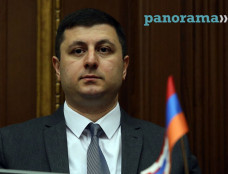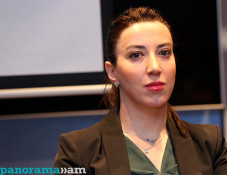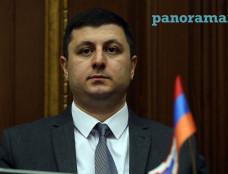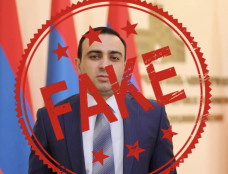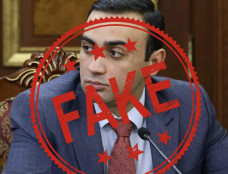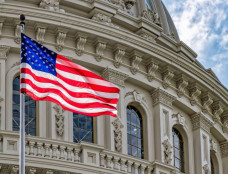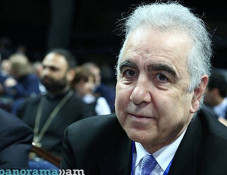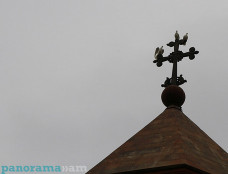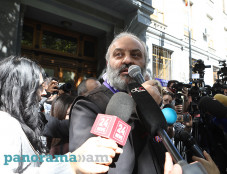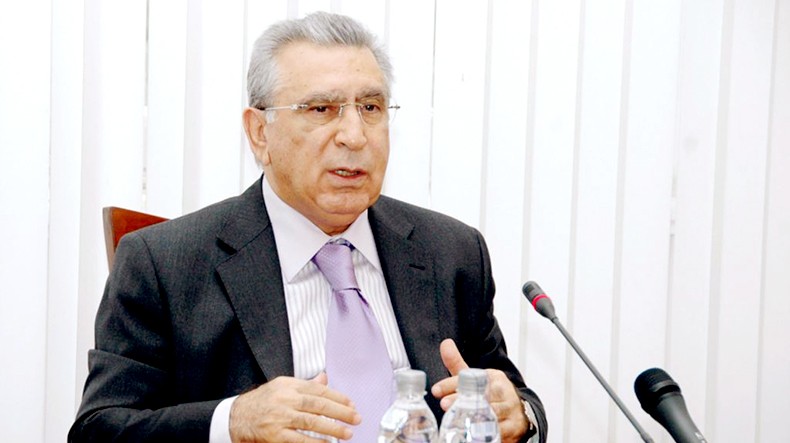
Azerbaijani historian: Without Armenian sources, it is impossible to imagine world historiography, which does not need Turkic language at all
Azerbaijani historian and native of Southern Azerbaijan GuntayGanjalp, together with his colleagues, is attempting to make the history of the Azerbaijani nation “older” on Kultura.az presenting his compatriots as natives of the region. However,contradicting himself, he does not hide that the Turkic ethnos, among which he undoubtedly ranks the Azerbaijanis, originated from the Mongolian tribes and is an alien in the region.
Unlike the ANAS “academicians,” he confesses several facts regarding the history of the Azerbaijani state, which originates since the signing of the Treaty of Turkmenchay. Ganjalp particularly notes that the rise of the Azerbaijani statehood is a “magic created by Rasulzade and his friends” for a nation, which did not have personalities like Rousseau, Voltaire, and Kant.
“The realization of a political, scientific, intellectual, and cultural project like this for masses with a dark past and without any bright period demanded great knowledge, flexibility, and historical responsibility from them,”Ganjalp writes.
According to the author, Mammad Amin Rasulzade took the idea of creating the Azerbaijani republic not from the Turkish historical tradition, but, on the contrary, on the base of its denial.
In the author’s opinion, new horizons in the creation of the statehood opened in the Kazakh Turks worldview only after the signing of the Treaty of Turkmenchay, thanks to which Mirza FataliAkhundov and the intelligentsia publishing in MollaNasraddin magazine could appear, and they ensured the conversion from the vicious circle of “Safavi-Iran” and “Shakhsey-Vakhsey” into the side of the Russian progress.
He also carries out a notable observation: those individuals were not formed “in some Muslim city, but in the Christian Tbilisi, where the basis of the modern Azerbaijani culture was laid. It was gradually moved to Baku.”Because “the Muslims' heads were not open to innovations” either in Iran or in Turkey, and even in the Caucasus, the retarded Azerbaijani nation was not informed about anything, and was engaged in “shakhsey-vakhsey.”
“The idea of the ‘Azerbaijani republic’ is the result of the intelligentsia’s acquaintance with the modern western culture, andoccupied a certainplace in the conditions of the Russian colonial policy. The statement that unlike thedemocratic republics createdby the Armenians and the Georgians,the Azerbaijan Republic -- created in 1918 -- was not formed on the national will is unambiguously true, as the majority was not even aware of that,” he writes noting that the situation has its own historical roots.
Unlike the Armenian and Georgian churches, the mosques were not engaged in the enlightenment of the nation: the Sunni mosques were preserving the Arabic language, and the Shia – the Farsi. Notably, the situation remains the same.
“The Turkic language did not have religious support, and the idea of the Azerbaijan’s independence was even deprived of enough national base. TheAzerbaijanis’ religiouspartstruggledforjoiningIran. If a referendum of independence was held at that time, the Azerbaijanis would again decide to join Iran,”Ganjalp writes.
As a geopolitical unit, Azerbaijan emerged with the collapse of the Transcaucasian Federation Sejm and the declaration of independence by Armenia and Georgia, and it immediately attracted the attention of the most powerful force of that time – the Ottoman Empire. “The Turkish army began to defend the Musavatists, who were a minority. The processes unfolded in the region and the new world opened space for a political territory named ‘Azerbaijan’ to enter into the historical arena,” he writes noting that Lenin is to blame for the retention of Turkey in the region’s history because in the years of the World War I, he sent tons of gold to Ataturk, who took advantage of his help. Otherwise, Turkey would have disappeared at all.
Owing to the revolutionary crisis in Russia, there was also space for the emergence of a country named Azerbaijan, which was born on the emptiness createdafter the Russian Empire’s collapse.
“This happened in the case, when only the 2% of the country with a population of 1-2 million could read and write. More truly, the notion of the ‘Azerbaijani nation’ did not even exist at that time. It is a big lie, when people say that the nation took part in that movement, as it was not a nation, but only a mass,” he writes highlighting that Baku’s Turkificationprocess started with the development of oil fields and immigration of over 400 thousand working Turks and Iranians.
Ganjalp further writes that the existence of a nation in the history is determined by written language. According to him, it is impossible to imagine the history of the Near East and the world without historical books written in Armenian and Georgian. “The Armenians wrote letters, books on history and literature in their native language since the 5th century. And there was nothing in our language. The world historiography does not need the Turkic language at all,” he notes.
Referring to the history of the Azerbaijani literature, Ganjalp writes that it “starts in the end of the 13th century with Hasanoglu’s two verses that nobody wants to read.” The Azerbaijani historiography does not have any books on history, heritage in the form of or primary source with social content. “This is because we did not have sources. In the end of the 19th century, Akhundovunderstood that truth; however, there was no state structure, even bey, capable of understanding him,” he writes.
Regarding the time of the Turks’ appearance in the Caucasus, among whom the Azerbaijanis alsorank, the historian writes it is proved by the fact that the Sasanidsbuilt fortresses in Derbent and Baku aiming to prevent the Turks’ inflow. The Turks managed to settle down in the northern Iran and Caucasus only after Babak’s defeat by the Turkic hordes. Afterhisfall, themajorityoftheTurksremainedinAzerbaijan.
The Turks started to take the local men to slavery and sell them in the slave’s market in Bagdad, and to marry the women. Each of them had 20-30 wives, from whom 50-60 children were born. The first Turkic government named Sajami emerged after Babak’s defeat, and it has nothing in common with the Turks.
“TheTurkswereneversettledto be able to buildfortresses. After Babak, the greatest inflow of the Turks was during Seljuqs’ reign, after which the region’s Turkification started. The third wave was during Genghis Khan’s reign. Due to Mongols’ small number, the ‘local’ Turks were included in their army. Hulagukhanset 200 thousand yurtas in the territory of Maragha and its outskirts. If 10 people were in each of them, it means that from one to two millions of Turk-Mongols invaded the region, which was a huge number at that time. Our history started here and in this way,” Ganjalp writes.
He further points to the importance of the Treaties of Gulistan and Turkmenchay, without which the emergence of a geopolitical unit named “Azerbaijan” in the history would have been impossible, and he notes that it happened thanks to Russia.
“Thanks to the Russians, the Azerbaijani Turks got letters and literacy, and were liberated from the yoke of the Safavid ideology,” he writes noting that the history of the contemporary Azerbaijan started after Turkmenchay.
Related news
Newsfeed
Videos






